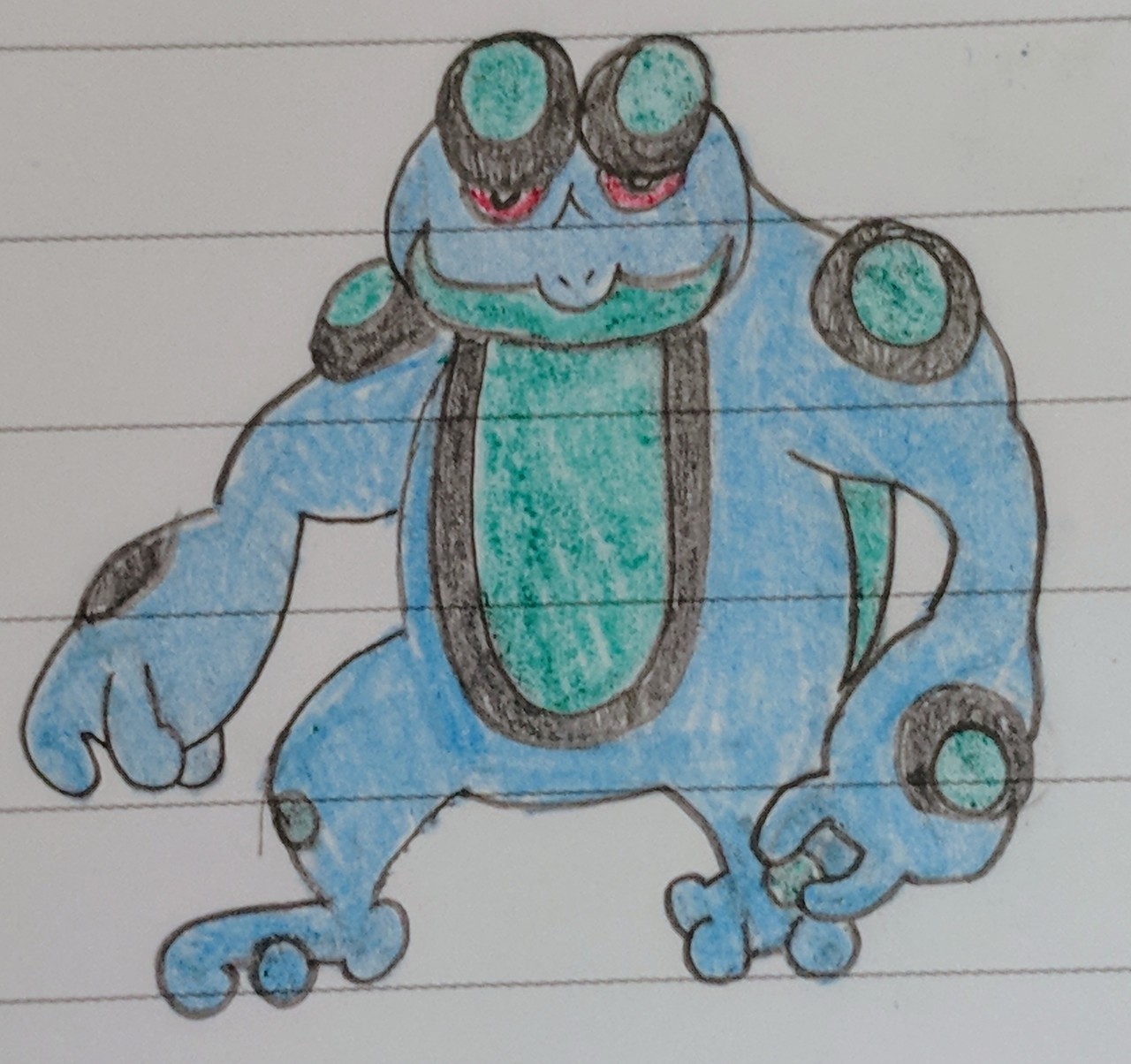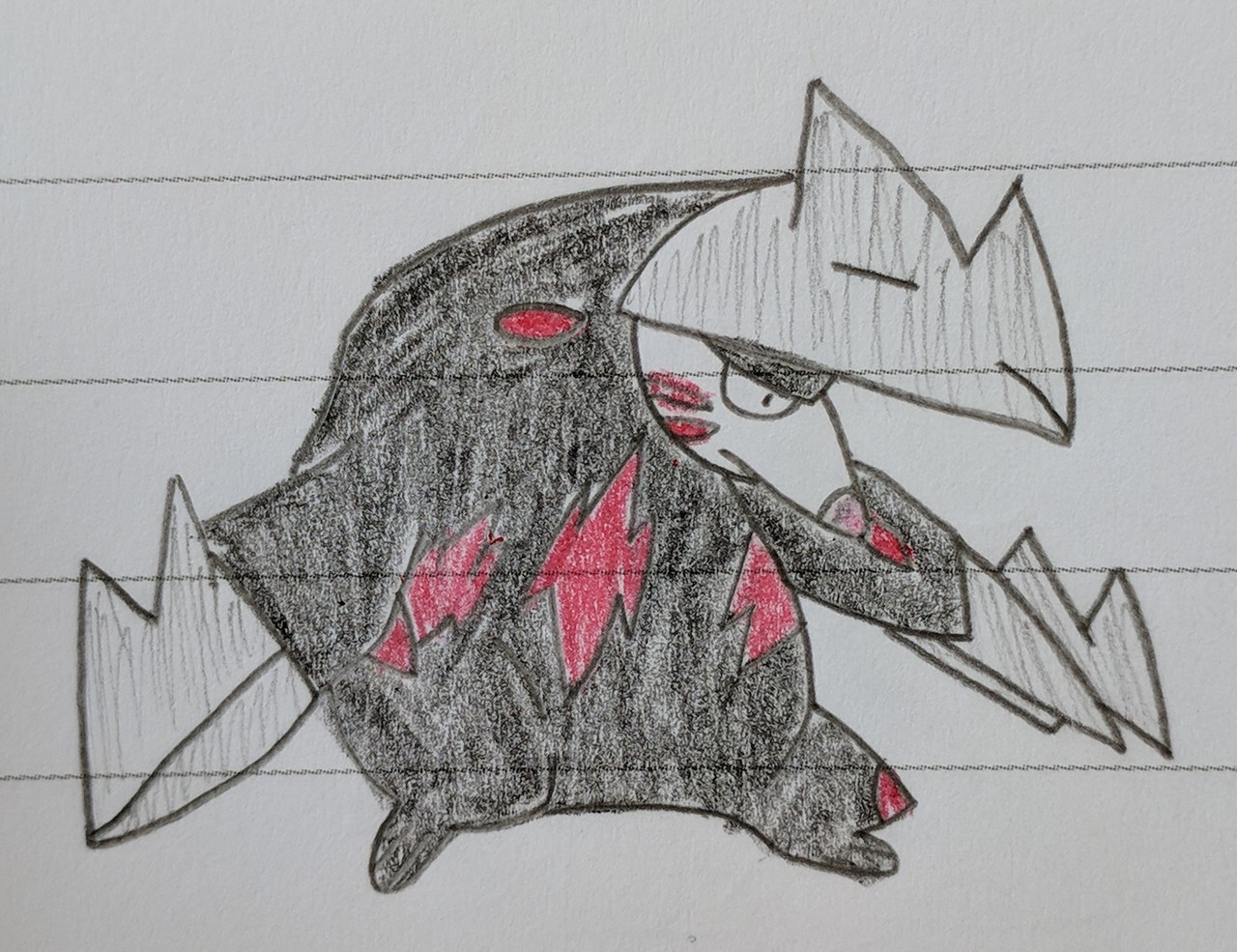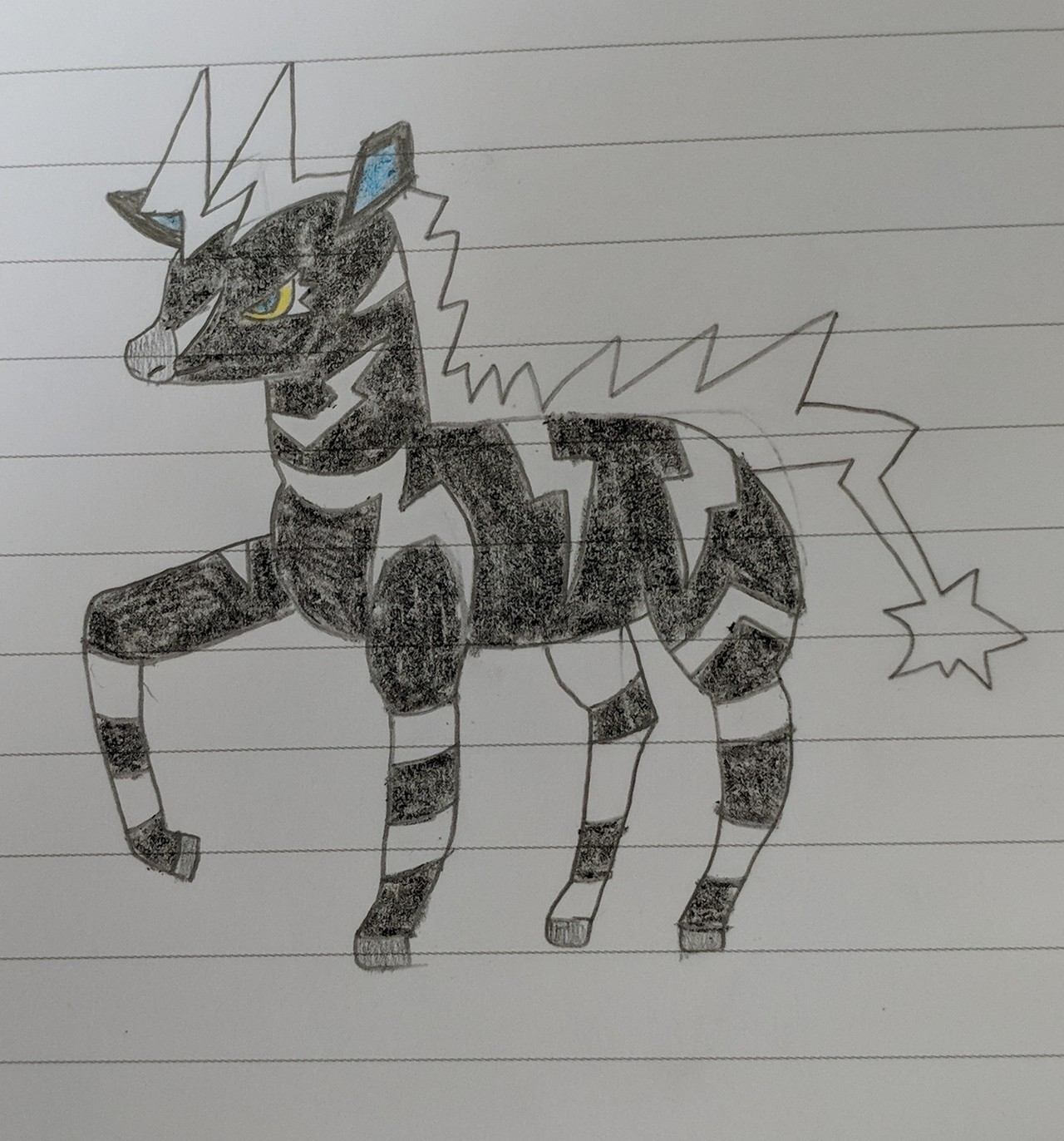How to play
Most games of Magic are played by two people, though some formats require more, and some don't require more people but are more fun when played in a group of three or four. Almost all of what I am about to say is the same in all formats, with just a couple of things that change in larger groups.The game begins with all players shuffling their decks. After you shuffle, it's polite to offer your deck to an opponent to cut, as a sign that you're playing fair. Players determine who goes first, usually by rolling dice, and then each draw an opening hand of seven cards. In a two-player game, the winner of the die roll chooses whether to play first and not draw a card on their first turn, or play second and get the extra card. In multiplayer games, everyone draws a card on their first turn.
The part of the play area (commonly called the battlefield) controlled by any one player looks like this:
- The Library is your deck.
- The Graveyard is where creatures go when they die, enchantments and artifacts when they're destroyed, instants and sorceries after their effects resolve or are prevented from resolving, and planeswalkers when they get tired of helping you and leave.
- Exile is where cards go when they're removed from the game. It's much easier to get cards back from the graveyard than from exile.
- Lands should go closer to you, and spells closer to your opponent. This is considered best practice because it makes it easier for your opponent to see what your cards do.
- Untap: If it's not your first turn, you untap all cards you control that are tapped. (Remember, tapping a card means turning it sideways to show that you are using an ability it has that requires it to be tapped.)
- Upkeep: Some cards, but not many, require you to do something during this phase. They will say so.
- Draw: You draw a card.
- First main phase: You may play a land and/or cast any spell that you have mana available to cast.
- Combat: You may have creatures you control attack an opponent or a planeswalker they control.
- When a creature attacks, it becomes tapped unless they have an ability that says otherwise.
- Creatures you cast this turn, unless they have an ability that says otherwise, have summoning sickness, which means they're a little nauseous from having just been pulled out of the aether and have to wait until next turn to attack, or to do anything else that requires you to tap them.
- Once you have declared which creatures you're attacking with, your opponent has a chance to block with creatures they control. Before and after this step, both of you have opportunities to cast Instant spells to affect the outcome of combat. You could, for example, cast Charge to make all your creatures temporarily stronger, or cast Moment of Craving to make one of your opponent's creatures weaker.
- Each creature then does damage equal to its power. If it was blocked, that damage is subtracted from the blocking creature's toughness; if it wasn't blocked, it's subtracted from the blocking player's life total. Creatures whose toughness is now zero or less go to the graveyard; creatures who survive will be restored to full toughness at the end of the turn.
- Second main phase: You can do any of the things you could do in the first main phase. If you played a land then, you cannot play another one now, unless you have cast a spell that says otherwise.
- End: Some cards, but not many, require you to do something "at the end of your turn." This is when you do those things.
In part 1 I mentioned that Instants are different from Sorceries in that Instants can be played at more points in the game. This will make sense now. Instants can be played at any time, even during your opponent's turn, and in response to their spells. Sorceries, like all other card types, can only be played during your main phases.
After your turn ends, your opponent's begins with their Untap phase. In larger games, play passes to the left. The game ends when only one player has a life total greater than 0. There are also cards that grant alternate win conditions; there's a list of those on the wiki if you're interested. Be aware that it includes some mechanics that aren't used anymore and might not make sense.
After your turn ends, your opponent's begins with their Untap phase. In larger games, play passes to the left. The game ends when only one player has a life total greater than 0. There are also cards that grant alternate win conditions; there's a list of those on the wiki if you're interested. Be aware that it includes some mechanics that aren't used anymore and might not make sense.
Common keywords
Magic has a lot of card abilities that are described using keywords. Not all of these keywords will make sense at first glance; here are some that show up fairly often and are good to know. Most of them either appear on creatures or can be given to creatures using other cards that grant them.
- Trample: If this creature is blocked, it deals any leftover damage to the blocking player.
- Haste: This creature does not get summoning sickness. It can tap and/or attack the turn you cast it.
- Vigilance: This creature does not tap when it attacks.
- Flying: This creature flies. It can only be blocked by creatures with Flying or Reach.
- Reach: This creature can block creatures with Flying.
- Flash: This spell (doesn't have to be a creature) can be cast at any time you can play an Instant.
- Menace: This creature is scary. It cannot be blocked by one creature on its own, only by two or more creatures.
- First Strike: This creature deals damage before all the others. You can use this to kill an opponent's creature in a combat situation where both would otherwise die.
- Double Strike: This creature deals both first strike damage and normal damage, effectively doubling its power.
- Hexproof: This spell (again, not just creatures) cannot be the target of spells your opponent casts that requires them to choose a target.
- Lifelink: When this creature deals any amount of damage to anything, its controller gains that much life.
- Counter: This one only appears on Instants and some spells with Flash. Cast this spell in response to another spell to cause that spell to go straight to its caster's graveyard without its effects happening.
- There is another meaning of "counter" in Magic; it also refers to putting something on a card to mark a change that's been made to it. The most common type of counter in this sense is +1/+1 counters, which add one to a creature's power and one to its toughness. A planeswalker's loyalty is also represented using counters. It's common to use dice in place of large numbers of counters.
- Permanent: This isn't an ability; instead, it's a grouping of card types. "Permanent" describes all the card types that stay on the battlefield after you cast them: creatures, enchantments, artifacts, and planeswalkers. Instants and sorceries are not permanents.
Thanks for sticking with me this far! I know it's a lot to take in. Next time I'll describe the different Magic play formats and some ways to get started playing.



















